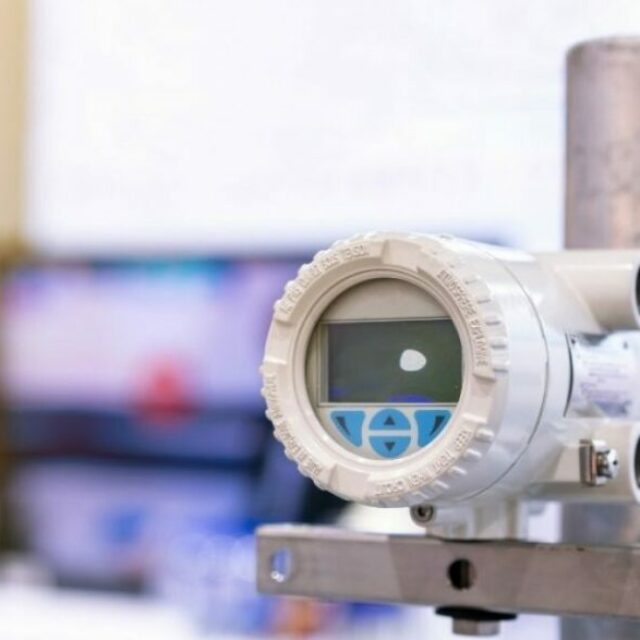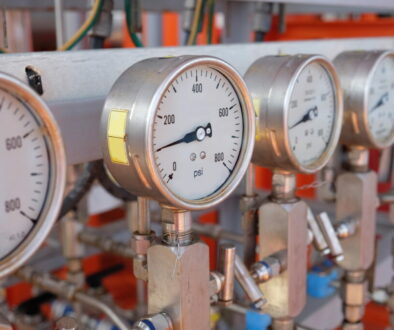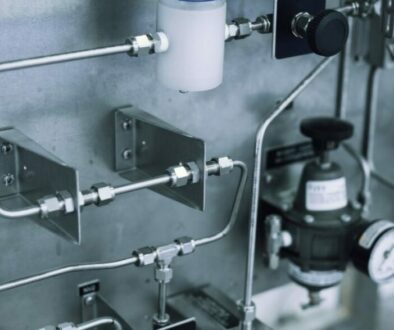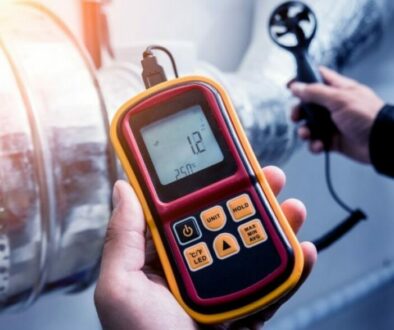Accuracy vs. Repeatability in Mass Flow Meters
When determining the ideal fit for your application, you’ll want to pay close attention to a flow meter’s specifications. Accuracy and repeatability are two key factors that should be considered when selecting a measurement device.
What are the differences between accuracy vs. repeatability in mass flow meters, and how do they affect a device’s reliability? Let’s find out.
Accuracy
The constant advancement of technology means that flow meters are more accurate than ever; but what precisely makes for an accurate meter?
Accuracy measures the closeness between a given measurement and the true value. In flow meters, it determines the difference between the meter’s output and its calibration curve. Readings are expressed as a percentage. Generally, the lower the reading, the better the meter’s accuracy.
Not all applications require accuracy. If you’re measuring simple concepts, like how much gas or liquid flows through a pipe, straying from the calibration curve is fine. For complicated concepts, on the other hand, like the mixing of volatile elements, accuracy is a must-have.
The primary thing that accuracy affects is a flow meter’s price. If you’re using your meter for a low-accuracy application, avoid overspending on a perfectly accurate device.
There are two specification settings that can measure a meter’s accuracy: full scale and reading.
Full Scale (FS)
Full scale readings are a relic. They’re from a time when mechanical gauges were common, and readings were done by examining physical marks on a dial.
Full scale measures the closeness to the true value, expressed as a percentage of the full-scale value. To determine accuracy as a percentage of full scale, you’ll need to multiply the accuracy percentage by the gauge’s full-scale pressure.
This method is easier to calculate and interpret, but less specific in its measurements. Sensors don’t perform consistently throughout their full range, so the closer they are to barometric pressure, the better the accuracy.
Reading (RD)
Due to the specification’s precise measurements, most digital devices use reading. This setting measures the closeness to the true value, expressed as a percentage of the true value. To determine accuracy as a percentage of reading, you’ll need to multiply the accuracy percentage by the pressure reading. The lower the pressure, the better the accuracy.
Floor specifications accompany these types of readings. They account for uncertainties like resolution and measurement noise.
These methods of specification are unique in their execution, but provide similar results. Depending on the type of pressure being measured, one method might have slight benefits over the other.
The Building Blocks of Accuracy
Accuracy is made up of three critical building blocks: calibration and measurement capability (CMC,) repeatability, and linearity.
CMC
A reliable calibration method and equipment are required to achieve high accuracy.
CMC is expressed as a value, and gauges how well a method or a piece of equipment can measure or read. This value isn’t necessarily fixed. To account for slight fluctuations, it’s frequently given as a range.
Since no method or piece of equipment is fully 100% accurate, there’s always a level of uncertainty with CMC. The amount of uncertainty increases under circumstances—for example, when flow and pressure are low.
CMC accounts for any inaccuracies and statistic variations that occur during its use. To achieve the best readings, you should use equipment that’s been shown to perform consistently, and well.
This is where repeatability, another crucial component of accuracy, comes in.
Repeatability
Repeatability refers to a meter’s ability to accurately reproduce flow, or in other words, the sameness of its outcomes. When operated under the same variables and conditions, which consist of flowrate, fluid properties, temperature, pressure, and more, a meter should produce extremely similar readings.
A device’s repeatability is measured by determining the reading at a specific flow rate, allowing the meter to fall to zero, and then resuming the flow. Measuring the discrepancies between the first reading and any subsequent readings will give a general picture of the device’s repeatability.
Results don’t need to be perfectly alike. In fact, it’s near impossible to receive results without moderate discrepancies. If the readings fall into the same general ballpark, the device has good conditions of repeatability.
A device with excellent repeatability will produce readings that fall into a similar close range. If you get readings of 95, 96, and 99 units per minute, this signifies good conditions of repeatability, since the numbers are alike and barely fluctuate.
A device with poor repeatability will produce numbers that differ wildly and appear to follow minimal rhyme or reason. If you get readings of 65, 82, and 102 units per minute, this signifies poor conditions of repeatability. The numbers are dissimilar and show intense amounts of fluctuation.
Accuracy is dependent on repeatability. You can have high repeatability without high accuracy, but you can’t have high accuracy without high repeatability. If you’re receiving varying numbers under similar conditions, it’s impossible to verify the accuracy of those readings.
For combustion control and most flow measurement applications, repeatability is a necessity, as it allows for accuracy to be determined.
Linearity
Controllers and meters are inherently nonlinear. To account for this, devices are outfitted with curve-fit corrections that are determined through a curve fit equation. If a device is functioning linearly, the correction is working.
Since these components add a certain degree of uncertainty to the measurement process, accuracy is determined by calculating their sum. Follow the equation: Accuracy = CMC + Repeatability + Linearity.
Long-term stability, conversion factors, and temperature and pressure coefficients, and more can likewise impact the accuracy of the process. To ensure your devices are functioning optimally, take these additional factors into account.
The importance of accuracy and repeatability in mass flow meters can’t be understated. They’re two, critical factors that should be considered when selecting a measurement device. Understanding how these components of accuracy relate to your device’s specifications will help you select the right meter for your application.
When purchasing mass flow meters, consider the amount of accuracy necessitated by your application, your own budget, and the meter’s overall design.
If you’re looking for highly accurate mass flow meters, including electronic air flow meters, Kelly Pneumatics has everything you need. Browse through our inventory, or contact us with any inquiries.





